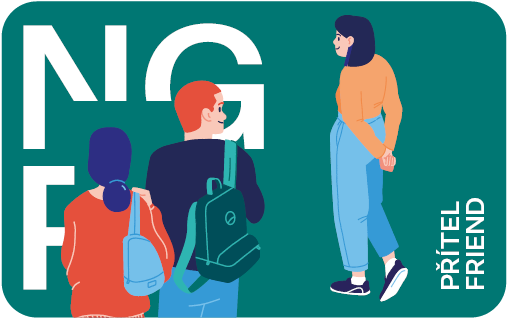The exhibition from the collections of the National Gallery Prague, which can be visited on the first floor of the convent complex, presents more than two hundred exhibits of painting, sculpture and arts and crafts documenting transformations in form and function in the course of three hundred years. Exhibits linked by provenance to the Czech Lands are complemented with artworks created in the wider central European context – especially in Franconia, Austria and Saxony – by, among others, Hans Pleydenwurff, Albrecht Altdorfer, Hans Hesse and Lucas Cranach the Elder.
The oldest artworks in this exhibition date from the rule of the Přemyslid dynasty of which St Agnes of Bohemia, the founder of this convent, was a member. The best works from the collections and national cultural legacy treasures include those dating from Luxembourg rule – that of King John of Bohemia and, especially, his successor Emperor Charles IV and his sons. Outstanding painters and sculptors active in the Luxembourg era included the Master of the Madonna of Michle, the Master of Vyšší Brod, Master Theodoric, the Master of the Třeboň Altarpiece and the Master of the Krumlov Madonna. The phenomenon known as the Beautiful Style arose in the late 14th century, bringing artistic renown to the Czech Lands. The period of the rule of Vladislaus II of Hungary and Louis II of Hungary is linked with the late Gothic and early Renaissance eras. The Master of the St George Altarpiece, the Master of the Puchner Ark, the Master of the Litoměřice Altarpiece and the brilliant carvers the Master of the Lamentation of Christ from Žebrák and the Master of the Lamentation of Christ from Zvíkov were active at that time. The most recent of the displayed artworks include paintings by the Monogrammist IW from the 1540s, when Renaissance aesthetics prevailed in central Europe.
Authors: Jiří Fajt, Štěpánka Chlumská
Curator: Štěpánka Chlumská, Collaboration: Tomáš Hladík, Marcela Vondráčková
Exhibition design: Jiří Javůrek, Vlastimil Vagaday, Slavomír Vlk, Viera Bínová (genia loci s.r.o)
Graphic Design: Pavel Lev, Aleš Najbrt (Studio Najbrt), Collaboration: Luděk Novotný
Authors: Jiří Fajt, Štěpánka Chlumská
Curator: Štěpánka Chlumská, Collaboration: Tomáš Hladík, Marcela Vondráčková
Exhibition design: Jiří Javůrek, Vlastimil Vagaday, Slavomír Vlk, Viera Bínová (genia loci s.r.o)
Graphic Design: Pavel Lev, Aleš Najbrt (Studio Najbrt), Collaboration: Luděk Novotný
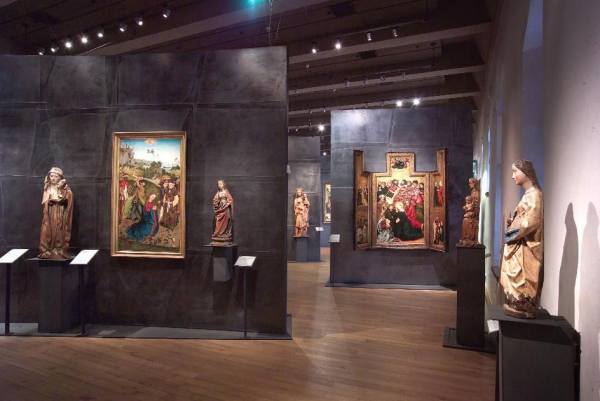
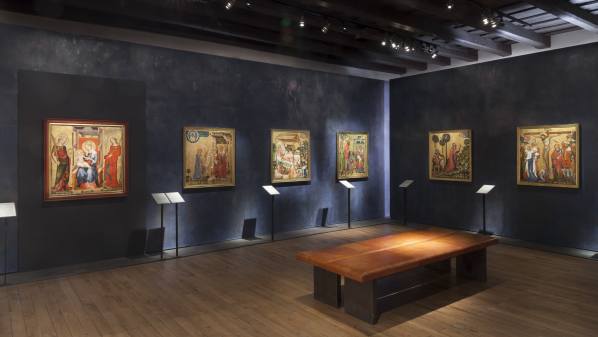


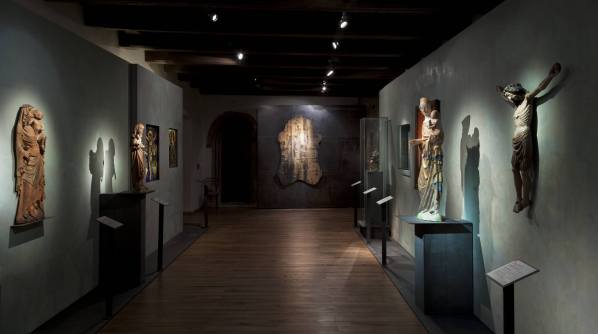


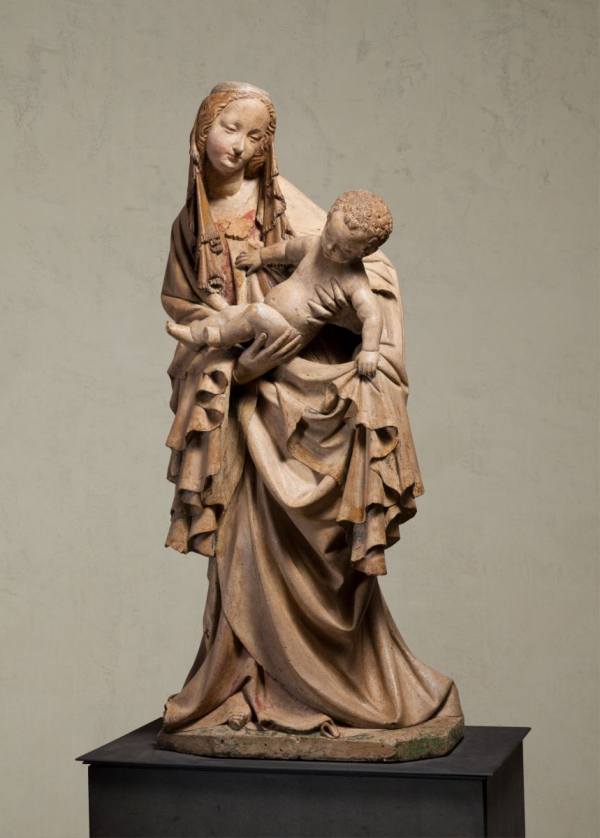
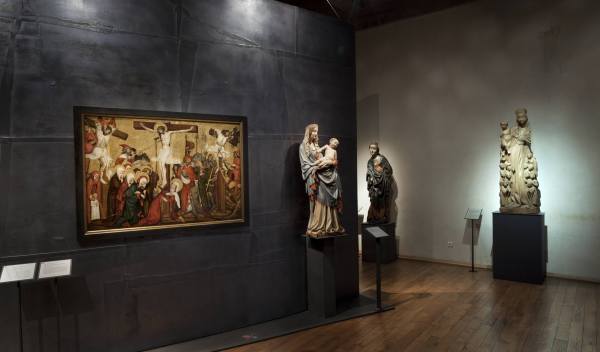
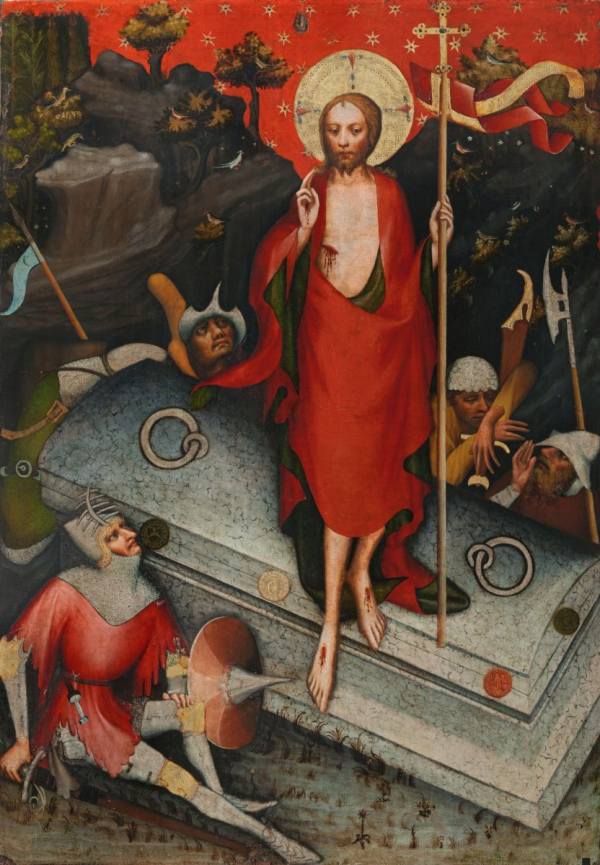


App The Hidden Secrets of Mediaeval Paintings
The new app The Hidden Secrets of Mediaeval Paintings offers a rare interactive examination of mediaeval panel paintings housed in the St Agnes Convent. The app is free of charge; its iOS and Android versions can be found in the App Store and Google Play.
The by-touch exhibition of 13th to 15th century Bohemian mediaeval sculpture castings
The collection of twelve sculpture castings is displayed on the ground floor of the Convent of St Agnes of Bohemia. The visitor can follow the stylistic transformation of sculpture across several centuries. In addition to the late-Romanesque high relief from the St George Basilica, there are also works dating from the rule of Charles IV and Wenceslaus IV. The work of well-known sculptor and architect Petr Parléř can be seen in portrait busts from the triforium of the St Vitus Cathedral inPrague. Each exhibit is accompanied with large-print text and a basic Braille caption.
Lapidarium of the Convent of St Agnes of Bohemia
The Lapidarium collection, amassed over three quarters of a century of archaeological research and convent restoration work, consists of hundreds of items. The National Gallery Prague lists more than 800 artefacts. A unique collection of finds is also housed in the National Museum Lapidarium, the Institute of Archaeology and the City of Prague Museum. Some sixty artefacts were selected for this exhibition, mainly covering the time of the convent’s construction in its heyday while Agnes the Premyslid was still alive, but also exhibits from the time of the convent’s 14th-century renovations or a set of Renaissance and Baroque tombstones. Most artworks are installed in the exhibition’s main section, at the exhibition in the former “Black Kitchen”, in the refectory and outside in the cloister of Friars Minor. Some of the major solitary pieces were left where originally used or found (see, for example, exhibits in the St Salvator Sanctuary, oratory).
Author: Helena Soukupová, in collaboration with Štěpánka Chlumská
Curators: Štěpánka Chlumská, Helena Dáňová
Exhibition design: Jiří Javůrek, Silvie Bednaříková (SGL Project)
Graphic layout: Jana Vahalíková (Studio Marvil)
Curators: Štěpánka Chlumská, Helena Dáňová
Exhibition design: Jiří Javůrek, Silvie Bednaříková (SGL Project)
Graphic layout: Jana Vahalíková (Studio Marvil)





